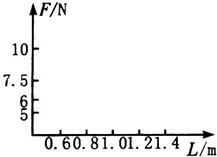实用类文本阅读。
阅读下面的文字,完成下面问题。(选作题)
1996年,贾平凹走出秦川 来到江浙。游走江浙,扬州自然是绕不过去的。皇帝老儿数次巡幸过的地方,老贾当然要来,何况扬州还是他非常敬重的汪曾祺的家乡。这也让我有机会第一次走近贾平凹。按照钱钟书的有关蛋与鸡的理论,我是在尝试一只又一只鸡蛋后,终于有幸见到了下蛋的鸡。
贾平凹常说,“我是个笨人”。不会说普通话,笨。不会用电脑写作,也是笨。直到现在,贾平凹写作时还是一本稿纸,一支水笔。拉了窗帘,把阳光与世界隔在外面,然后拧亮台灯,写作台便成了这间屋子的中心。这种写作氛围与他收藏的那些古朴的汉罐、无言的奇石是相契合的。
有段时间,他下决心要用电脑。机器搬回来了。可这字没法打。用拼音吧,他连普通话都不会说,哪里还谈得上拼音?用五笔吧,就是把字 根贴在墙上,也记不住。试试手写板吧,还是不行,电脑不认他的字。勉强写了200来字,就发狠再也不用电脑了。他从小爱音乐,想拉二胡,可到现在也学不会,指头特别硬。他对此解释为:我可能是很笨的那种人,就好像一条狗,你给它开了再大的门,它还是从小洞里钻;就好像一只鸡,你把它放在粮堆上,它还是扒着吃。几十年都用笔在写,突然用机器写,对字的那种快感、那种敏感就没有了,与其花半年时间来扭转思维,改变习惯,真的还不如让我慢慢地消磨我的生命。慢慢地在字里玩着。
贾平凹家里有车,但他不开。因为他当年骑自行车还摔跟头呢,摔断过腰,还撞过不下5个人。贾平凹也用手机,但是除了接打电话,手机的其他功能于他而言基本上是聋子的耳朵。有一次,他说,我这手机怎么没有来电储存功能的?别人拿过去一看,好好的呀,是他不会用。指导了半天也教不会他,怎么办?只好找张纸来,用最明白浅显的语言写下:手机来电存储功能操作方法一二三……
这就是他自己所谓的“笨”了。
果然笨吗?你听说过哪个笨人能像他这样,写出几十本散文、小说?据说他年轻时,有一年竟创下了每周发表一篇作品的奇迹。这不但与“笨”丝毫联系不起来,而且简直可算得上天才了。用汪曾祺的说法,贾平凹是个“鬼才”。《美女》执行主编穆涛是河北人。一次车过秦岭,穆涛说:你们陕西人真谦虚,那么大一个山,叫个岭。老贾反应很快:你们河北人更谦虚,那么大一个省会,叫个庄。这段经典对话,都被老贾写到文章里了。说自己“笨”,老贾这是自相矛盾呢。
对于他自嘲的“笨”,也许叫“拙”更精当些。“大直若屈,大巧若拙,大辩若讷。”拙和讷是贾平凹给人的外在印象,而巧与辩才是真实的他。打个不恰当的比喻,贾平凹就像一颗荔枝,一眼看过去,是粗粝的,不起眼的,而剥开表皮后,里面却是莹润细致的。
在哪里都能成活的树,往往成为处处皆见的行道树;只有那些对生存环境极为敏感的才会越来越少,最终成为珍稀树种。贾平凹就是只有在三秦大地才能显示出旺盛生命力的珍稀树种。这便显出了“拙”的优势。
1.下列各项对原文的理解和分析与文意不相符合的两项为( )
A.“慢慢地在字里玩着”表现了贾平凹已经觉知自己跟不上现时代的步伐,只能在文字世界里表达自己的情感。
B.“聋子的耳朵”说明手机的许多功能对贾平凹来说只是摆设,所以许多功能他不会使用。
C.贾平凹欣赏自己收藏的那些汉罐和奇石,体现的是他的生活情趣和爱好,与“笨”无关。
D.关于“荔枝”的比喻,“粗粝”指的是贾平凹的外在形象,“莹润细致”指的是他的敏感纤细的情感世界。
E.文章最后一节的意思是三秦大地独特的自然和人文环境造就了贾平凹,贾平凹也只有在这样的环境中才如鱼得水。
2.理解“我是在尝试一只又一只鸡蛋后,终于有幸见到了下蛋的鸡”这句话的含义,并说说其作用。
___________________________________________________
3.文章先写贾平凹的“笨”,后写他的“拙”,这样写有何好处?
___________________________________________________



